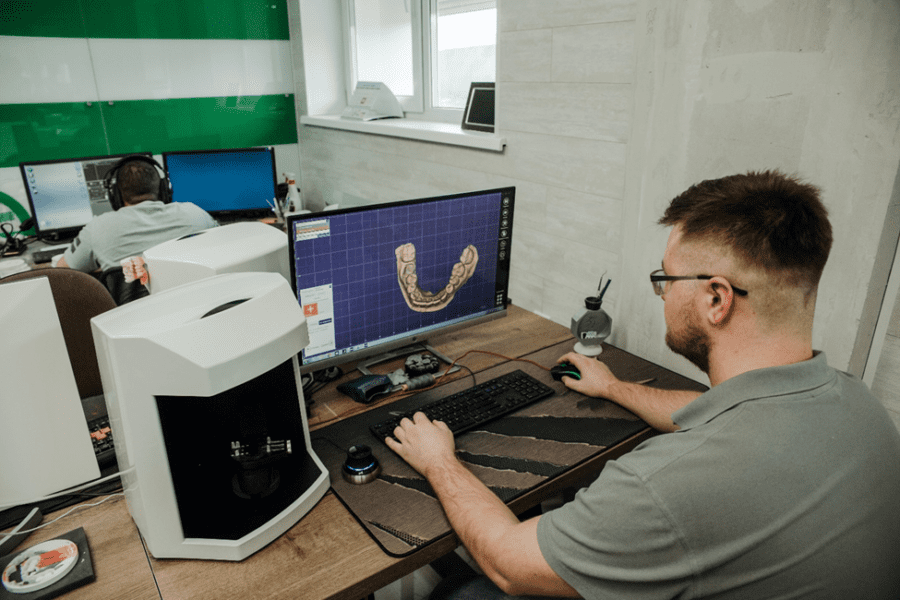Top Dental Implant Technology and Trends You Should Know
Technology is full of wonders. These wonders make people curious about the increasing services derived from advanced machinery, automation, electronic communication, and artificial intelligence (AI). The 21st century is synonymous with the Digital Age, involving fields like dentistry as its inevitable part.
Since dentistry deals with the anatomy, development, and diseases of the teeth, the latest technology comprises implants, fillings, crowns, braces, root canal treatment, teeth whitening, and veneers. The services spotlight the notion of personalized care and oral health. Therefore, individuals looking to improve their dental conditions are fortunate to experience technological miracles performed on their teeth.
As far as implants are concerned, a report envisions an exceptionally high market size, around $107 billion. The implementation of medical technology in dentistry continues to grow.
Top 8 Trends of Dental Implants
To understand better, let’s look at the top eight trends of dental implants. They will help you catch on with the significance of modernized dental implantation.

3D Printing
3D printing is the process of making a three-dimensional object by using a computer-guided machine. The purpose is to build up material layer by layer. In dentistry, doctors can create customized or detailed implants using 3D printers. The chief benefit of 3D printing is that it enables dentists to devise tailored implants for their patients, leaving no room for inadequacy.
3D printers are game changers, for they have smoothened the surface for dentists and patients. They can be on the same page throughout the implantation phase.
Artificial Intelligence (AI) Algorithms
AI is all-encompassing in today’s world, even in dentistry. Doctors productively incorporate AI into diagnosis and treatment plans, particularly AI algorithms.
For example, AI algorithms aid in establishing early indicators of tooth decay. They give enough time for your dentist to take instant action and implant the tooth before the situation escalates.
Nanotechnology or Molecular Technology
You might be thinking about how nanotechnology has a hand in dental implants. Well, it enhances osseointegration. The term comes from “osseous” which means “bone.” Osseointegration is a structural connection between the living bone and the outside of a supporting implant. In other words, osseointegration assists the implant uniting with the jaw.
Utilizing nanotechnology, your dentist implants the tooth with a thorough structure. The stability of your implants gradually improves thanks to the nanostructured fixture.
Dental Laser
As of 2023, the discipline of dentistry has predominantly incorporated lasers. It is a light amplification procedure by stimulated emission of radiation. It is a harmless dental treatment that restores tooth decay, gum disease, oral lesions, and many other dental issues through laser. Furthermore, it helps dentists target the affected area, leaving the encircling tissue intact or untouched.
Laser dentistry guides dental implantation with 3D imaging. We can see how technology mingles with dentistry, paving the way for collateral advances.
Immediate Implant Loading
Also Raad 5 Reasons to Consider Dental Veneers
Also known as Immediate Function, dentists employ it to ensure tooth restoration after the patient achieves enough stability. Immediate loading mandates fast recovery because of patients’ growing demand.
Old dental implant practices include a waiting period between implant placement and prosthetic tooth attachment. However, with immediate loading techniques, patients leave the hospital on the same day.
Cone Beam CT Scans
Cone beam computed tomography (CBCT) scans provide dentists with complete 3D images of a patient’s mouth. CBCT scans are helpful in treatment planning. They identify potential complications. CBCT scans are a pivotal technology in the realm of dental implants, offering an all-inclusive insight into a patient’s oral structures.
This superior imaging technique has gained widespread adoption in dentistry due to its capability to give precise information, enabling more accurate diagnosis, treatment plans, and implant placement.
Smart Dental Implants
With the proliferation of the Internet of Things (IoT), smart dental implants have emerged. Smart dental implants can monitor the patient’s oral health and transmit data to their dentist, detecting early issues and promoting proactive treatment.
Smart dental implants represent a cutting-edge growth in dental implant technology. They harness the aptitudes of the Internet of Things (IoT) to boost the monitoring and maintenance of oral health. These implants are equipped with sensors and wireless communication technology.
Biomimetic Materials
Recent advancements in materials science have led to the change of biomimetic materials that closely resemble natural teeth. The materials improve the aesthetic appeal of dental implants while ensuring longevity and functionality.
In dental implants, biomimetic materials manifest a significant leap forward in recreating the original look, feeling, and functioning. Biomimetic materials are designed to imitate the physical and aesthetic attributes of natural teeth while providing greater durability and biocompatibility.
Takeaway
All in all, dental implants have gained entry into the mainstream. Dentistry has seen a considerable evolution in science and technology. The success rate of dental implant technologies beats the drum for both doctors and patients. The credibility of innovative dental implants eradicates pessimism, encouraging patients to trust their dentists and go for avant dental solutions.


